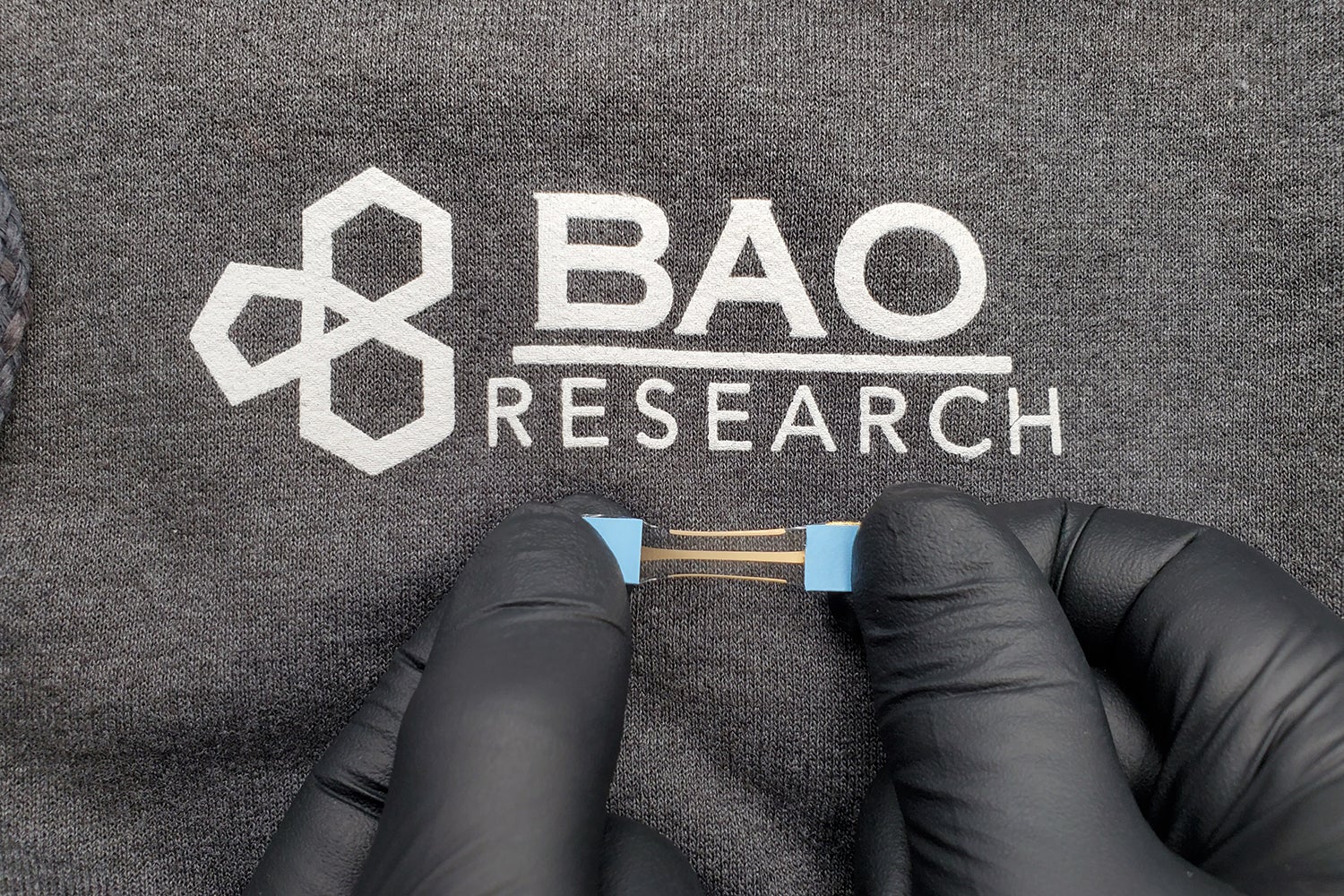Stanford University engineers have created a small, autonomous device with a stretchable and flexible sensor that can be taped to the skin to measure the changing size of tumors underneath. The non-invasive, battery-powered device is sensitive to a hundredth of a millimeter (10 microns) and can wirelessly transmit results to a smartphone app in real-time with the push of a button.
The FAST system measures tumor size regression and is a new method to test the effectiveness of anti-cancer drugs. (Image credit: Alex Abramson, Bao Group, Stanford University)
In practical terms, the researchers say, their device — dubbed FAST for Flexible Autonomous Sensor Measuring Tumors — represents an entirely new, fast, inexpensive, hands-free, and accurate way to test the effectiveness of cancer drugs. On a larger scale, this could lead to promising new directions in cancer treatment. FAST is detailed in a paper published on September 16th scientific advances.
Every year, researchers test thousands of potential cancer drugs in mice with subcutaneous tumors. Few make it to human patients, and the process of finding new therapies is slow, as technologies that measure tumor regression from drug treatment take weeks to read out a response. The inherent biological variation of tumors, the shortcomings of existing measurement approaches, and relatively small sample sizes make drug screening difficult and labor intensive.
“In some cases, the observed tumors have to be measured manually with calipers,” says Alex Abramson, first author of the study and recent postdoc in the lab of Zhenan Bao, the KK Lee Professor of Chemical Engineering at the Stanford School of Mechanical Engineering.
Using metal pincer-like calipers to measure soft tissue is not ideal, and radiological approaches cannot provide the type of continuous data needed for real-time assessment. FAST can detect changes in tumor volume on the order of minutes, while caliper and bioluminescence measurements often require weeks of observation to read changes in tumor size.
The power of gold
FAST’s sensor is made from a flexible and stretchable skin-like polymer that contains an embedded layer of gold circuitry. This sensor is connected to a small electronic backpack designed by former postdocs and co-authors Yasser Khan and Naoji Matsuhisa. The device measures the stress on the membrane – how much it stretches or shrinks – and transmits this data to a smartphone. With the FAST backpack, potential therapies associated with tumor size regression can be quickly and reliably ruled out as ineffective or expedited for further study.
Based on studies using mice, the researchers say the new device offers at least three significant advances. First, it provides continuous monitoring as the sensor is physically connected to the mouse and stays in place throughout the trial period. Second, the flexible sensor encloses the tumor and is therefore able to measure changes in shape that are difficult to detect with other methods. Third, FAST is both autonomous and non-invasive. It is attached to the skin – similar to a patch – battery operated and connected wirelessly. The mouse is free to move without being impeded by the device or cable, and scientists do not have to actively handle the mice after sensor placement. FAST packs are also reusable, only cost around $60 to assemble, and attach to the mouse in minutes.

FAST’s sensor is made from a flexible and stretchable skin-like polymer that contains an embedded layer of gold circuitry. (Image credit: Alex Abramson, Bao Group, Stanford University)
The breakthrough lies in FAST’s flexible electronic material. A layer of gold is applied to the skin-like polymer, which when stretched develops small cracks that change the electrical conductivity of the material. As the material stretches, the number of cracks increases, which also increases the electronic resistance in the sensor. As the material contracts, the cracks come into contact again and conductivity improves.
Both Abramson and co-author Matsuhisa, an associate professor at the University of Tokyo, characterized how this crack propagation and the exponential changes in conductivity can be mathematically equated to dimensional and volume changes.
One hurdle the researchers had to overcome was concern that the sensor itself could interfere with the measurements by putting undue pressure on the tumor, effectively squeezing it. To circumvent this risk, they carefully matched the mechanical properties of the flexible material to the skin itself to make the sensor as pliable and supple as real skin.
“It’s a deceptively simple design,” says Abramson, “but these inherent benefits should be of great interest to the pharmaceutical and oncology communities.” FAST could significantly speed up, automate and reduce costs the process of screening cancer therapies.”
Alex Abramson is now an assistant professor of chemical and biomolecular engineering at the Georgia Institute of Technology; Yasser Khan is an assistant professor in the Ming Hsieh Department of Electrical and Computer Engineering at the University of Southern California; and Naoji Matsuhisa is an Associate Professor in the Institute of Industrial Science Department of Informatics and Electronics at the University of Tokyo. Other Stanford co-authors include Carmel T. Chan, former senior scientific manager; student Alana Mermin-Bunnell; Robyn Fong, professor of life science research in the Department of Cardiothoracic Surgery; Rohan Shad, former postdoctoral fellow at the School of Medicine; William Hiesinger, assistant professor of cardiothoracic surgery; and Parag Mallick, associate professor of radiology. Zhenan Bao is also a member of Stanford Bio-X, the Stanford Cardiovascular Institute and the Wu Tsai Human Performance Alliance. Hiesinger and Mallick are also members of Stanford Bio-X and the Cardiovascular Institute.
The research was supported in part by the National Institutes of Health and the Stanford Wearable Electronics Initiative (eWEAR).
That eWEAR TCCI Scholarly Writing Awards is a project commissioned by the Wearable Electronics Initiative (eWEAR) at Stanford University and made possible with funding from eWEAR Industrial Affiliates program member Shanda Group and the Tianqiao and Chrissy Chen Institute (TCCI®).
#wearable #device #measures #changing #size #tumors #skin #Stanford #News


Leave a Comment